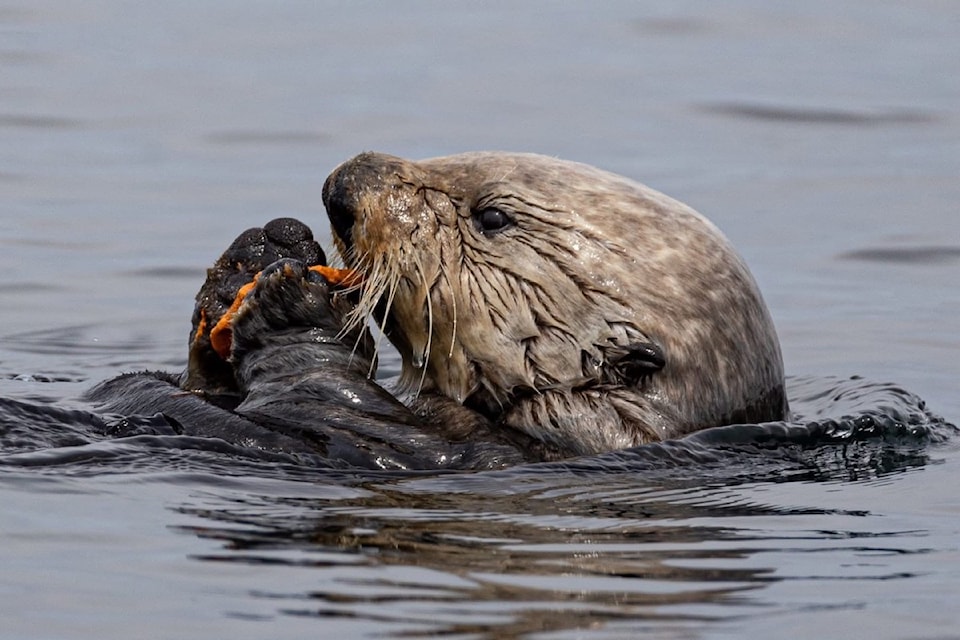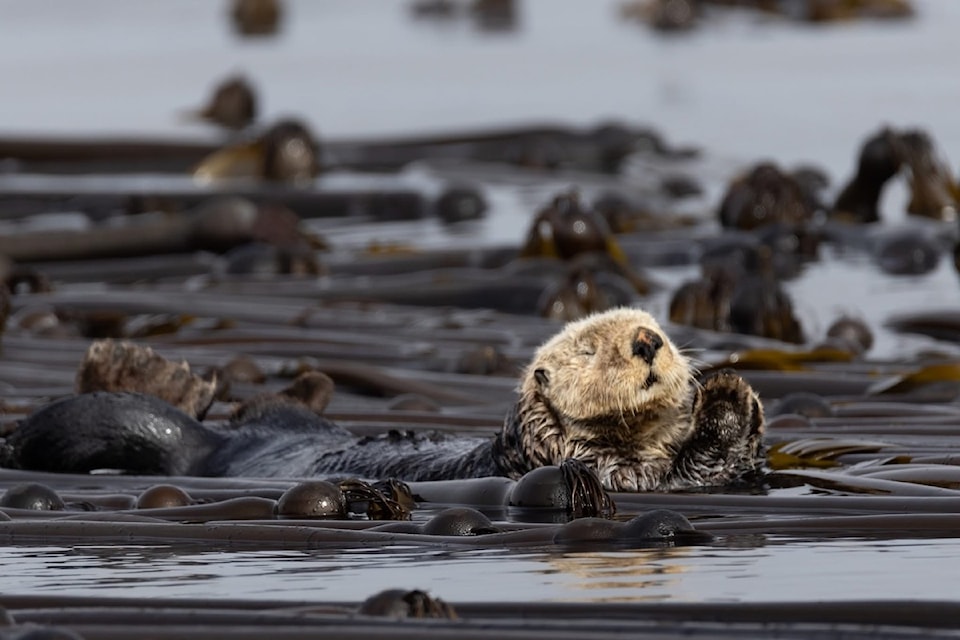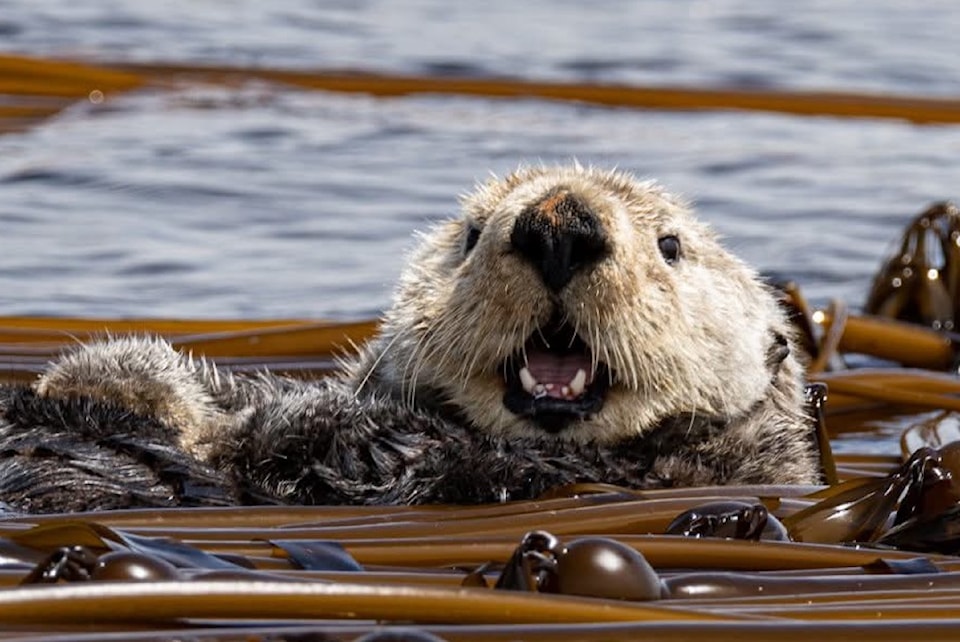Floating off the south coast of Vancouver Island is a lonely-looking sea otter with a dark secret ╬┌č╗┤½├Įō many dark secrets.
Known to the whale watching community and his fans as ╬┌č╗┤½├ĮśOllie╬┌č╗┤½├ĮÖ, the infamous 13-year-old sea otter has been living out his life among the kelp at Race Rocks ecological reserve for over a decade.
Initially nicknamed the ╬┌č╗┤½├Įślonely sea otter╬┌č╗┤½├ĮÖ because of his solitary lifestyle, in more recent years he has had a rather more sinister title bestowed upon him.
Meet Ollie, the ╬┌č╗┤½├Į£Salish Sea Serial Killer,╬┌č╗┤½├ĮØ a cute, furry sea otter with a dark side and a rap sheet longer than the ╬┌č╗┤½├ĮśColwood crawl╬┌č╗┤½├ĮÖ at rush hour.
Thought to be responsible for the deaths of around 20 river otters ╬┌č╗┤½├Įō probably more as the marine mammal is not under 24-hour surveillance ╬┌č╗┤½├Įō Ollie has earned himself quite the blood-thirsty reputation.
╬┌č╗┤½├Į£Usually when river otters are seen in the area [of Race Rocks], they╬┌č╗┤½├ĮÖre not seen again,╬┌č╗┤½├ĮØ says Mollie Cameron, who first encountered Ollie in 2016, working for a Sooke-based whale watching company.
Showing some level of attachment to his victims, Cameron says Ollie will carry the dead body ╬┌č╗┤½├Į£like a teddy bear╬┌č╗┤½├ĮØ for days after the killing.
╬┌č╗┤½├Į£It almost looks like the way a sea otter mom would carry a pup,╬┌č╗┤½├ĮØ said Cameron, who is also the director of Sooke-based wildlife education organization, Wild Wise. ╬┌č╗┤½├Į£He'll drape them over himself while he's swimming and eating, and leave them up on rocks when he goes diving.╬┌č╗┤½├ĮØ
And Ollie doesn╬┌č╗┤½├ĮÖt stop at ╬┌č╗┤½├Į£ottercide,╬┌č╗┤½├ĮØ his list of crimes grows longer the deeper Cameron dives into his history. His river otter victims show visible signs of sexual trauma.
╬┌č╗┤½├Į£He╬┌č╗┤½├ĮÖs been seen doing nefarious things with them for days on end after they've died,╬┌č╗┤½├ĮØ said Cameron.
While they can╬┌č╗┤½├ĮÖt be certain, Cameron and others in the whale-watching community believe the sea otter is not feeding on his victims.
╬┌č╗┤½├Į£They normally eat invertebrates like crabs, snails, urchins, clams, abalone and mussels,╬┌č╗┤½├ĮØ she said.

So why is Ollie killing and defiling river otters? Cameron says the behaviour could be attributed to his ╬┌č╗┤½├Įślonely╬┌č╗┤½├ĮÖ lifestyle, as he is one of only a handful of sea otters recorded this far east in the Strait of Juan de Fuca.
╬┌č╗┤½├Į£The theory is that there's no females around,╬┌č╗┤½├ĮØ she says, noting there was a female sea otter and a pup spotted once in the area in 2023, who disappeared as fast as they appeared.
╬┌č╗┤½├Į£And so he╬┌č╗┤½├ĮÖs just taking his sexual frustration out on the river otters, as that's kind of his only outlet, supposedly. There╬┌č╗┤½├ĮÖs all that testosterone pumping, so he╬┌č╗┤½├ĮÖs probably trying to satiate himself in some way.╬┌č╗┤½├ĮØ
But the behaviour is not unique to Ollie, explains Cameron.
In the early ╬┌č╗┤½├Įś00s, nearly 20 cases of sexual behaviour between male sea otters and juvenile harbour seals were observed in California ╬┌č╗┤½├Įō most incidents were fatal for the seal.
Similar to the theory about Ollie╬┌č╗┤½├ĮÖs behaviour, a lack of females in the vicinity was blamed for the attacks in California.
Sooke╬┌č╗┤½├ĮÖs newest sea otter on the scene, ╬┌č╗┤½├ĮśWhiffin', , is also thought to be taking his frustrations out on other wildlife; slaying ducks in the process.
╬┌č╗┤½├Į£I would assume it's maybe for the same reason that Ollie kills the river otters,╬┌č╗┤½├ĮØ said Cameron.
With the species having a reputation as playful, cute and intelligent ╬┌č╗┤½├Įō sea otters are the only marine mammal known to use stone tools ╬┌č╗┤½├Įō people might be surprised to hear Ollie has the upper hand on his river otter rivals,
╬┌č╗┤½├Į£Sea otters are the bigger of the two,╬┌č╗┤½├ĮØ says Cameron. ╬┌č╗┤½├Į£Every animal has the potential to be dangerous ╬┌č╗┤½├Į” sea otters are no exception to that.╬┌č╗┤½├ĮØ
Living offshore, out of sight from humans, means the ╬┌č╗┤½├Įścrimes╬┌č╗┤½├ĮÖ of sea otters like Ollie most often go unnoticed, explains the wildlife expert. But for river otters who live closer to humans in abundance, it╬┌č╗┤½├ĮÖs not so easy to escape public scrutiny.
╬┌č╗┤½├Į£So there's higher opportunity for negative interaction with with pets and people,╬┌č╗┤½├ĮØ Cameron said.
While the likes of Ollie and Whiffin might not be a welcome sight for some of their wild neighbours, for Cameron their presence represents a slow comeback to the area for the animal listed as 'special concern' under the Species at Risk Act.
Hunted for their dense fur ╬┌č╗┤½├Įō on one square inch of a sea otter, there can be anywhere from 500,000 to a million hair follicles ╬┌č╗┤½├Įō sea otters were extirpated from the B.C. coast in the early 1900s.
╬┌č╗┤½├Į£Between 1969 and 1972, 89 sea otters, taken from Alaska, were reintroduced to the coast of British Columbia,╬┌č╗┤½├ĮØ said Cameron.
But while the marine mammal can be seen rafting in big groups in places like Tofino, numbers remain small off the south coast of Vancouver Island.
╬┌č╗┤½├Į£In the many years that I've been a whale watching captain, I think I've only seen four individuals,╬┌č╗┤½├ĮØ says Cameron. ╬┌č╗┤½├Į£Five, including the Whiffin Spit sea otter.╬┌č╗┤½├ĮØ

As the population shows signs of a slow increase, the biggest threat to sea otters remains the same as it did in the early 1900s: humans.
╬┌č╗┤½├Į£There is quite a bit of poaching that still happens with sea otters,╬┌č╗┤½├ĮØ says Cameron. ╬┌č╗┤½├Į£Humans, at the end of the day, are the biggest threat in general.╬┌č╗┤½├ĮØ
To help support Ollie and his fellow local sea otters, Cameron recommends keeping a safe distance of at least 100 metres at all times, encouraging the animal to stay wild and not become habituated to humans.
╬┌č╗┤½├Į£It╬┌č╗┤½├ĮÖs exciting to view animals in their wild habitats, but maintaining that respect for them while being in their homes is so important,╬┌č╗┤½├ĮØ she says.
As for Ollie's future, Cameron is curious to see how the animal might react if more sea otters were to move to the area and if it might change his savage behaviour.
But in the meantime, river otters beware ╬┌č╗┤½├Įō you might want to give Race Rocks a wide berth for now.



